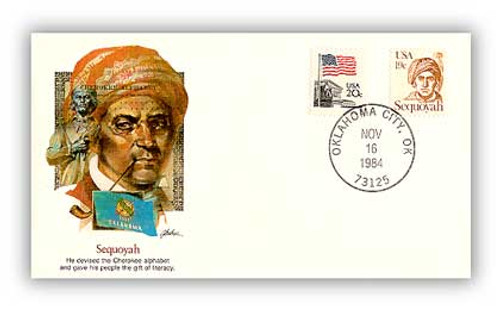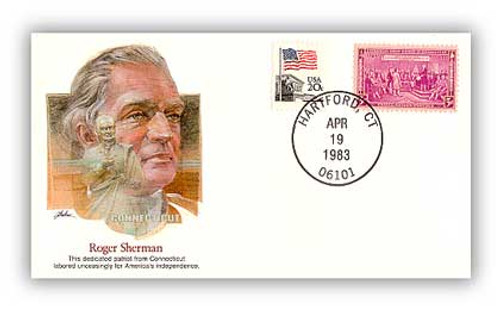
# 126201 - 1982 PRA King Kamehameha I
Â
Death Of King Kamehameha IÂ
Kamehameha’s exact birthday is unknown but is believed to have been between 1735 and 1761. There are several different accounts claiming the date of his birth, but one interesting one places his birth in 1758.
According to legend, just before his birth, Hawaii’s mystic seers, or kahunas, determined a great leader would be born who would reign over all the islands. They came to this conclusion upon the sighting of a bright star. The date of the sighting coincides with the appearance of Halley’s Comet in 1758.

Kamehameha was ordered to be put to death by his grandfather, Alapai, who was formerly king. But after Kamehameha was born, he was raised in secret. His original name, Paiea, meaning “Soft-Shelled Crab,†was changed when he reached adulthood to Kamehameha, meaning the “Great Lonely One†or the “One Set Apart.â€

Kamehameha was raised in the royal court of his uncle KalaniÊ»ÅpuÊ»u. Upon his uncle’s death, Kamehameha received an important religious position, guardianship of the Hawaiian god of war, KÅ«kÄÊ»ilimoku, plus control of the Waipi’o Valley. His cousin succeeded his uncle and the two young men didn’t get along. Eventually, a group of chiefs from the Kona district pledged their allegiance to Kamehameha.

The island was divided between the two cousins, but they all lived in relative peace until July 1782. A dispute among some of their chiefs broke out and led to the Battle of Battle of MokuÊ»Åhai, during which Kamehameha’s cousin was killed. It was a major victory for Kamehameha, which gave him leadership over most of the island of Hawaii. From there, Kamehameha was determined to unite all the islands. He received aid from British and American traders, who sold him guns and ammunition.

By 1795, Kamehameha had conquered all of the main islands except Kauai and Niihau. He appointed the local chiefs as governors and proclaimed himself King Kamehameha I. The chiefs of Kauai and Niihau accepted his rule in 1810.
The first Hawaiian chief to unite the islands of Hawaii, Kamehameha was an able ruler and role model for the Hawaiian monarchy. He used chiefs as effective local rulers and preserved many of his people’s customs and religion. However, he did institute changes when necessary. Under Kamehameha’s rule, trade increased greatly. He built a huge fortune for Hawaii through a government monopoly on the sandalwood trade and port duties on visiting ships. Throughout the period of discovery by whites, Kamehameha did not succumb to foreign rule or colonization. In fact, he often had white men, or haoles, in his employ.

Kamehameha is believed to have died on May 8, 1819 (though it could have been May 14). Following tradition, his friends hid his body. The Hawaiians believed a person’s mana, or power, was sacred, so their body needed to be buried in secret to protect their power. His final resting place is still unknown today.

Kamehameha had between 21 and 30 wives and a total of 35 children. The children born to his highest-ranking wife, KeÅpÅ«olani, would succeed the throne. His family led the kingdom until 1872. After a series of governments, Hawaii became a territory of the United States in 1900. Though his family no longer reigns in Hawaii, King Kamehameha is a revered figure in the state’s history.
Â
Death Of King Kamehameha IÂ
Kamehameha’s exact birthday is unknown but is believed to have been between 1735 and 1761. There are several different accounts claiming the date of his birth, but one interesting one places his birth in 1758.
According to legend, just before his birth, Hawaii’s mystic seers, or kahunas, determined a great leader would be born who would reign over all the islands. They came to this conclusion upon the sighting of a bright star. The date of the sighting coincides with the appearance of Halley’s Comet in 1758.

Kamehameha was ordered to be put to death by his grandfather, Alapai, who was formerly king. But after Kamehameha was born, he was raised in secret. His original name, Paiea, meaning “Soft-Shelled Crab,†was changed when he reached adulthood to Kamehameha, meaning the “Great Lonely One†or the “One Set Apart.â€

Kamehameha was raised in the royal court of his uncle KalaniÊ»ÅpuÊ»u. Upon his uncle’s death, Kamehameha received an important religious position, guardianship of the Hawaiian god of war, KÅ«kÄÊ»ilimoku, plus control of the Waipi’o Valley. His cousin succeeded his uncle and the two young men didn’t get along. Eventually, a group of chiefs from the Kona district pledged their allegiance to Kamehameha.

The island was divided between the two cousins, but they all lived in relative peace until July 1782. A dispute among some of their chiefs broke out and led to the Battle of Battle of MokuÊ»Åhai, during which Kamehameha’s cousin was killed. It was a major victory for Kamehameha, which gave him leadership over most of the island of Hawaii. From there, Kamehameha was determined to unite all the islands. He received aid from British and American traders, who sold him guns and ammunition.

By 1795, Kamehameha had conquered all of the main islands except Kauai and Niihau. He appointed the local chiefs as governors and proclaimed himself King Kamehameha I. The chiefs of Kauai and Niihau accepted his rule in 1810.
The first Hawaiian chief to unite the islands of Hawaii, Kamehameha was an able ruler and role model for the Hawaiian monarchy. He used chiefs as effective local rulers and preserved many of his people’s customs and religion. However, he did institute changes when necessary. Under Kamehameha’s rule, trade increased greatly. He built a huge fortune for Hawaii through a government monopoly on the sandalwood trade and port duties on visiting ships. Throughout the period of discovery by whites, Kamehameha did not succumb to foreign rule or colonization. In fact, he often had white men, or haoles, in his employ.

Kamehameha is believed to have died on May 8, 1819 (though it could have been May 14). Following tradition, his friends hid his body. The Hawaiians believed a person’s mana, or power, was sacred, so their body needed to be buried in secret to protect their power. His final resting place is still unknown today.

Kamehameha had between 21 and 30 wives and a total of 35 children. The children born to his highest-ranking wife, KeÅpÅ«olani, would succeed the throne. His family led the kingdom until 1872. After a series of governments, Hawaii became a territory of the United States in 1900. Though his family no longer reigns in Hawaii, King Kamehameha is a revered figure in the state’s history.












